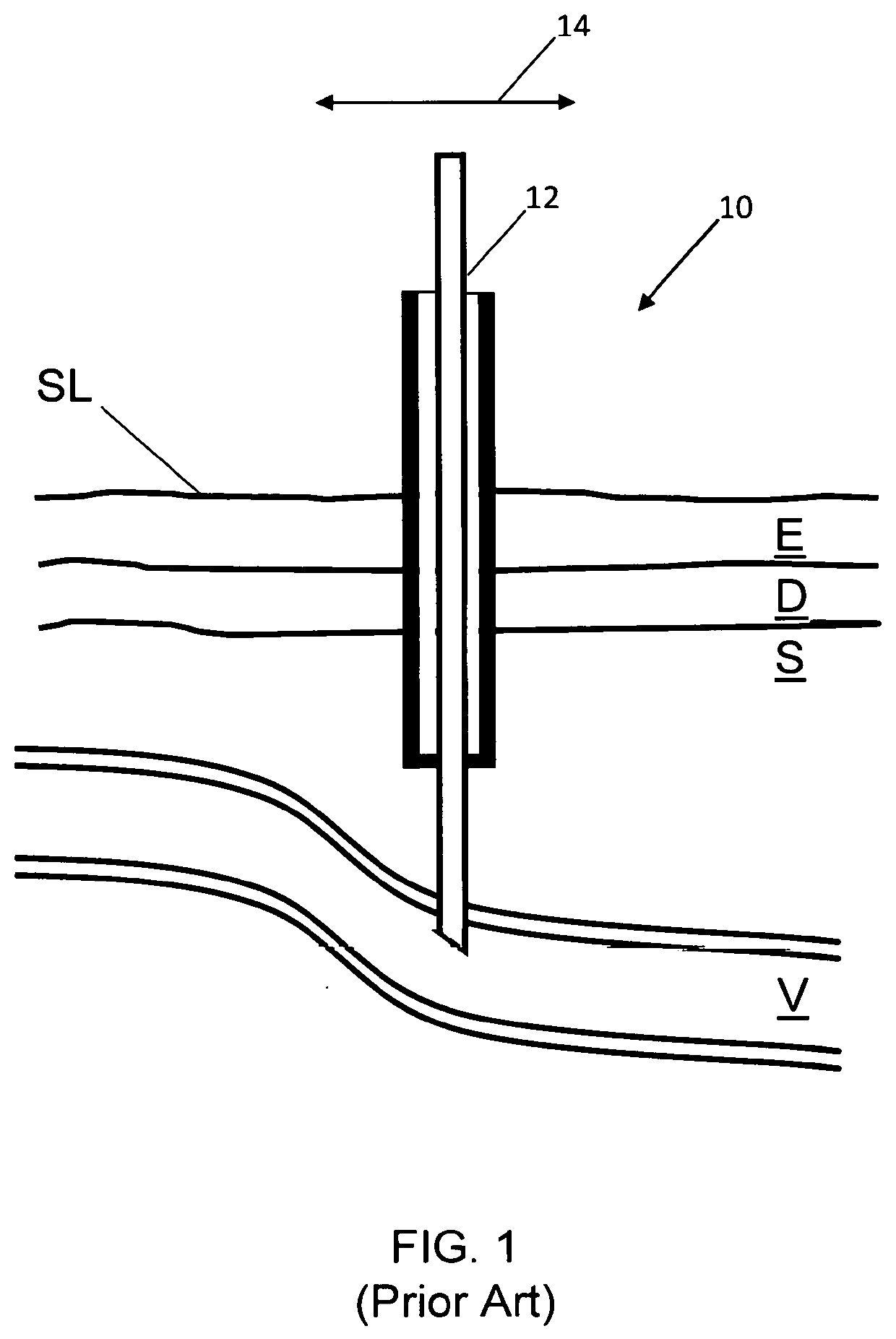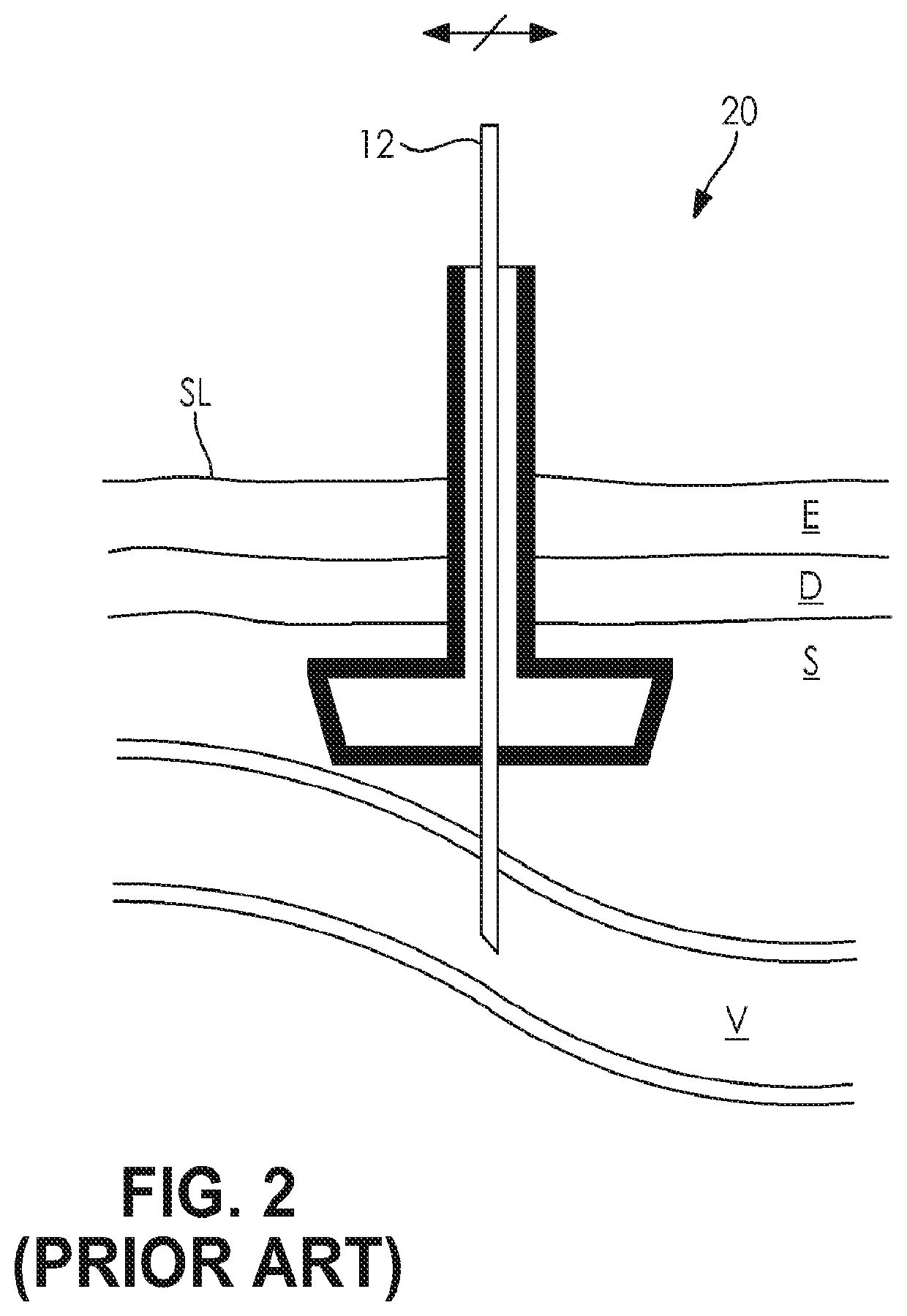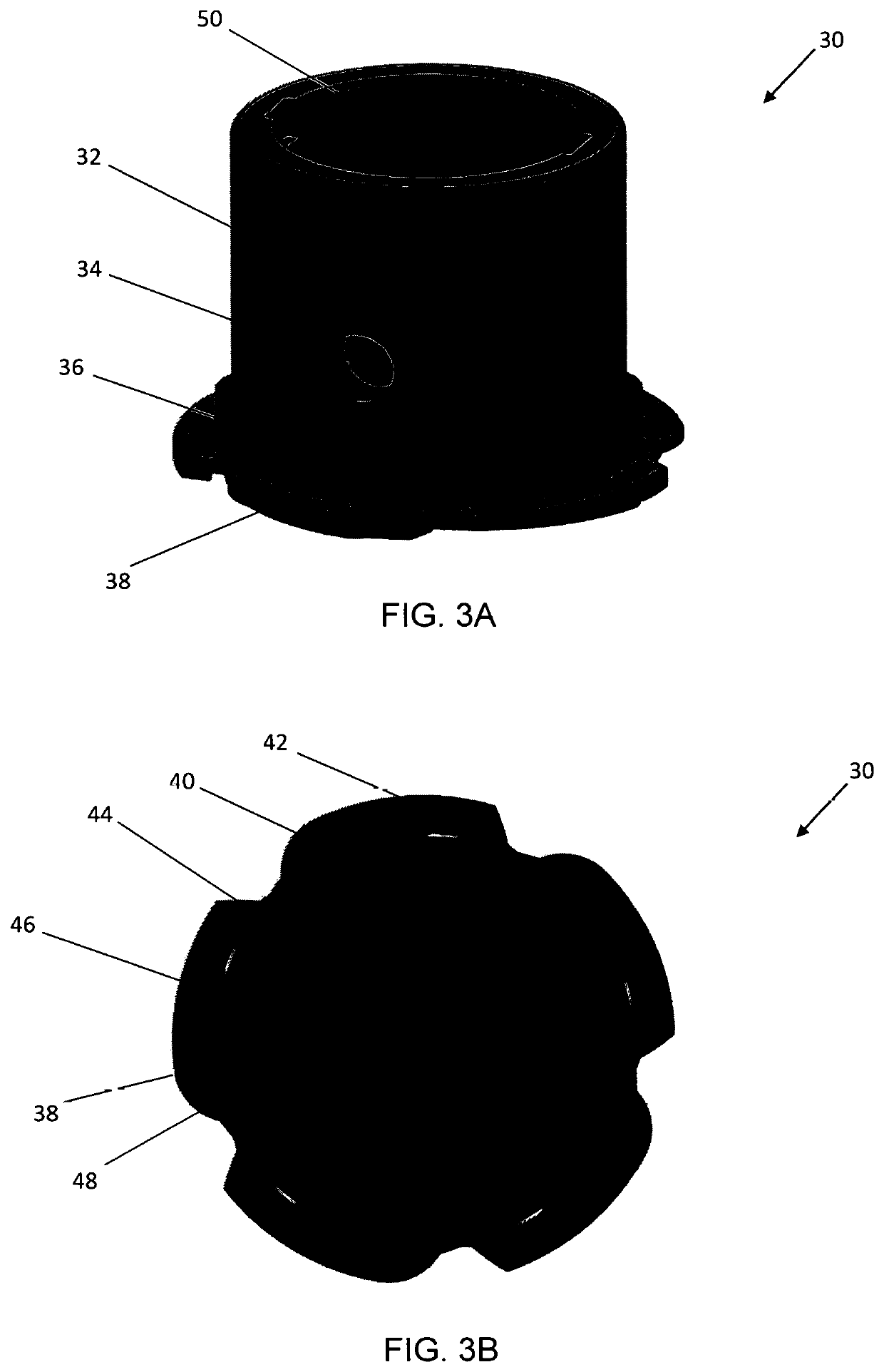Percutaneous appliance with transdermal collapsible flanges
a technology of collapsible flanges and percutaneous appliances, which is applied in the field of percutaneous access devices, can solve the problems of affecting the stability of the percutaneous flange, the inability to rotate and radially advance the flange, and the inability to maintain the integrity of the tissue culture, so as to prevent the rotation of the pad and enable the rotation and radial advancement of the flang
- Summary
- Abstract
- Description
- Claims
- Application Information
AI Technical Summary
Benefits of technology
Problems solved by technology
Method used
Image
Examples
Embodiment Construction
[0026]The following description of the inventive embodiment(s) is merely exemplary in nature and is in no way intended to limit the scope of the invention, its application, or uses, which may, of course, vary. The invention is described with relation to the non-limiting definitions and terminology included herein. These definitions and terminology are not designed to function as a limitation on the scope or practice of the invention but are presented for illustrative and descriptive purposes only. The inventive devices are disclosed herein in general with respect to a catheter, but this is not meant to be a limitation on the invention. Any tube, instrument, wire, material or assembly that penetrates the skin of a subject is similarly operable for use with the inventive device or integral therewith.
[0027]The invention has utility as a percutaneous access device with a reduced likelihood of dislodgment that require's a reduced implantation incision so as to increase the rate of healin...
PUM
| Property | Measurement | Unit |
|---|---|---|
| pore sizes | aaaaa | aaaaa |
| size | aaaaa | aaaaa |
| size | aaaaa | aaaaa |
Abstract
Description
Claims
Application Information
 Login to View More
Login to View More - R&D
- Intellectual Property
- Life Sciences
- Materials
- Tech Scout
- Unparalleled Data Quality
- Higher Quality Content
- 60% Fewer Hallucinations
Browse by: Latest US Patents, China's latest patents, Technical Efficacy Thesaurus, Application Domain, Technology Topic, Popular Technical Reports.
© 2025 PatSnap. All rights reserved.Legal|Privacy policy|Modern Slavery Act Transparency Statement|Sitemap|About US| Contact US: help@patsnap.com



